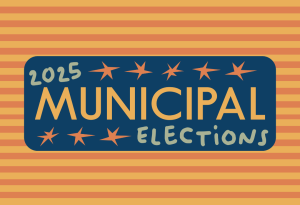Through Ella’s Eyes: Lending laments: stop preying on college students
November 2, 2021
Student loan debt. It’s a hotly debated topic and a serious problem. Taking out loans is, unfortunately, a necessity to afford the rising cost of college. For many students, it’s nearly impossible to get through college without taking out some sort of loan for tuition. The student loan crisis is a burden on students, parents and the American economy, but it is not the only financial hardship facing the demographic. As of Aug. 2021, over 96% of students reported having some sort of debt. Predatory lending and credit card debt are just another financial fiasco college students have to stare down.
According to CollegeFinance.com, the average college student has over $3,280 worth of credit card debt. Surprisingly, credit card debt is the most common form of debt among college students, even more common than student loan debt. About 65% of college students have credit card debt, while 58% have student loan debt. Of the 64.8% with credit card debt, missing payments and only paying the minimum amount are the most common mistakes. Colleges are a pool of young, inexperienced adults, and they are gold mines for predatory creditors.
American public schools are sorely lacking in teaching financial literacy, and creditors take advantage of this naivety. Never learning how to responsibly use a credit card or the importance of credit is bad news for college students but great news for credit card companies. Young people with little education on how financial systems work, limited experience in the real world and unstable incomes are the perfect prey for credit card companies.
Luckily, there are federal laws protecting students against greedy companies. Universities must disclose any agreement they have with creditors to advertise on campus. Additionally, creditors are not allowed to offer any tangible items to students as marketing on campuses. Companies are banned from issuing cards to anyone under 21 unless the consumer has a cosigner or a consistent income. The importance of legislation shielding college students from predatory lending should not be understated.
Although the federal government’s intervention is crucial for protecting young consumers, there is more that can be done. Students are graduating with enough student loan debt and don’t need the addition of crippling credit card debt too. It’s harder to get a mortgage, rent an apartment, sign a lease or buy a car. Debt can even affect job applications if potential employers run credit checks. Not to mention, debt can be a heavy emotional burden and source of stress. Practically giving away credit cards on campuses is reckless. The practice is reminiscent of the irresponsible lending practices before the 2008 market crash.
The solution is not an easy one. Obviously, credit card companies cannot be trusted to police unethical lending practices or regulate themselves, especially when profit is on the line. Plus, regulation can only do so much. For starters, financial literacy should be taught more and earlier in schools, but that solution would take systematic change and would likely take years to implement a curriculum. Student credit card debt is happening right now and an urgent solution is vital. It’s up to universities to protect their students. Keeping creditors off campus, ensuring students have proper financial literacy and offering student financial advice are a few steps universities can take to protect their students from a lifetime of debt. Not only is it ethical, but it’s essential for the economic wellbeing of a generation.














Sarah • Nov 17, 2021 at 7:32 pm
Great article! I have often wondered why more people don’t talk more about the lack of financial education in America….it seems like an obvious problem. But I guess as long as big companies are making $$$$ nothing will change…